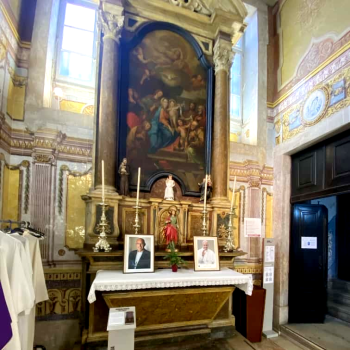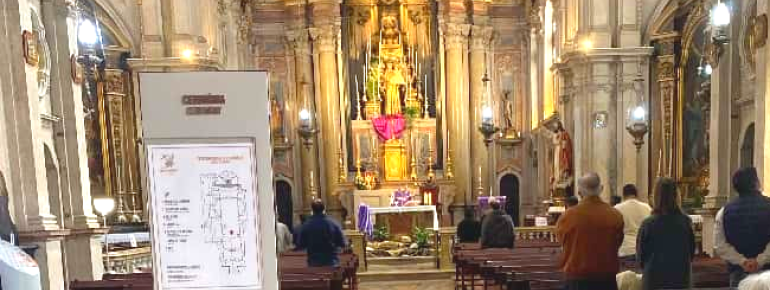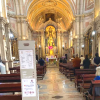Contents
Description

The Igreja de Santo António is an important sanctuary in the heart of Lisbon, rising above the birthplace of Santo António, the city's patron saint. The Baroque church impresses with its dignified architecture and houses several precious relics, including a finely crafted statue of the patron saint, which survived the disastrous earthquake of 1755 unscathed.
Works of art and relics
One significant work of art is an old canvas painting depicting Santo António with the most authentic facial features – one of the most valuable iconographies in Portuguese artistic heritage. The sacristy is covered with multicoloured tiles made in the Royal Manufactory. With its elegant Baroque furnishings and wealth of religious art treasures, the Igreja de Santo António is one of Lisbon's most important religious sites.
The birth chapel
In the basement of the church is the crypt, which marks the original birthplace of Santo António and serves as a quiet, contemplative place of pilgrimage. This sacred place is visited daily by worshippers and visitors who come here to pay homage to the patron saint of the city.
Historical Information
Santo António is much more than just a historical figure – he is the spiritual heart of Lisbon. Born in 1195, the Augustinian monk left his homeland as a preacher and eventually settled in Padua, where he ended his life. More than 800 years after his birth, the people of Lisbon passionately revere their patron saint, especially on 13 June, when the city is transformed into a colourful folk festival. The Santo António Responsário, a Latin prayer text of special popular veneration, is recited by believers worldwide to find lost objects.
The construction of the church
The original chapel on this site dated back to the 15th century. As the veneration of Santo António grew, it was decided to build a more dignified place of worship. In 1767, the current Baroque Igreja de Santo António was completed according to plans by architect Mateus Vicente de Oliveira. The building did not survive the 1755 earthquake unscathed, but the most valuable relics were preserved and still bear witness to the saint's special protective role over his hometown.
How to get there
By car
Parking is limited in the narrow streets. Public car parks are located about 200-300 metres away, including at Terreiro do Paço and in the adjacent streets.
By public transport
The ‘Santo António’ tram stop is located directly in front of the Igreja de Santo António. It can be reached with lines 28E and 12E. The tram also stops in the immediate vicinity of the central square Terreiro do Paço, from where the church is about a 2-3 minute walk away.




